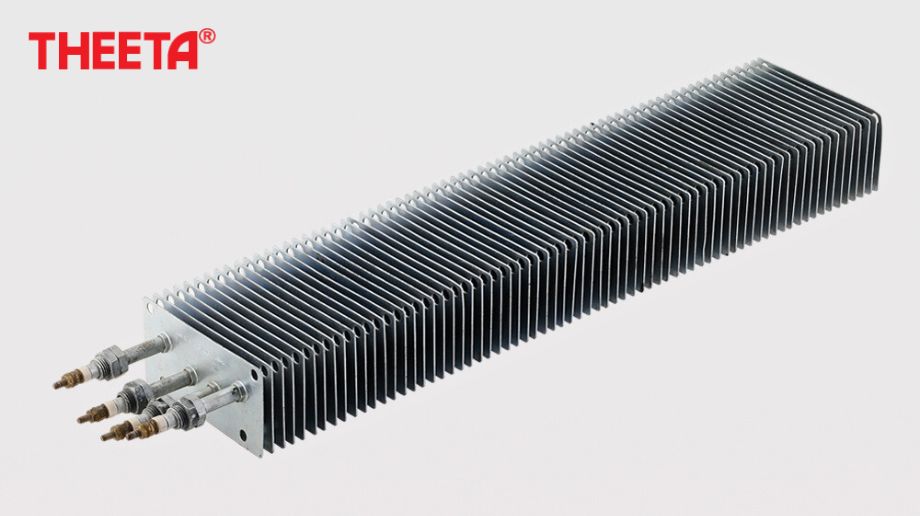
Industrial heating elements connect several industries in the complex web of industrial operations. These unsung heroes keep temperatures stable, aid chemical reactions, and power a wide spectrum of industrial equipment. Process air heating, chemical and electrical industry demands, railways, and HVAC systems all depend on industrial heating elements.
Process Air Heating with Spiral and Rectangular Finned Heaters
Process air heating is one of the most common applications of industrial heating elements. Here, efficiency and dependability are of immense significance. Spiral finned heaters and rectangle finned heaters are usually the go-to alternatives for assuring uniform heat distribution and minimizing energy waste. These heating elements are designed to resist extreme temperatures, making them appropriate for a variety of manufacturing operations. Spiral finned heaters, with their larger surface area, provide better heat transfer, whereas rectangular finned heaters are more adaptable and may be customized to fit specific requirements.
Chemical Industry's Dependence on Alkaline and Titanium Heaters
The chemical industry makes use of a large number of temperature-controlled procedures. Alkaline and titanium heaters suit these rigorous needs. Alkaline heaters are corrosion-resistant and suitable even for the most hostile chemical conditions. Titanium heaters can handle the harshest chemical processing conditions due to their outstanding corrosion and heat resistance.
Electrical Industry's Load Bank Heaters
Load bank heaters play a crucial role in the electrical sector by facilitating the testing and maintenance of electrical equipment. These heaters play a crucial role in emulating electrical loads in order to verify the dependability of power systems, generators, and other electrical elements. Certain load bank heaters are equipped with fins that improve their ability to dissipate heat, resulting in enhanced efficiency. Industrial heating elements are of significant relevance in critical applications where the maintenance of electrical equipment is paramount. These heating elements are vital in facilitating uninterrupted operations.
Railways: LHB RMPU, HVAC, and Underfloor Heaters
The railway sector exhibits a notable range of heating needs. The LHB RMPU heaters are specifically engineered to ensure optimal passenger comfort through the regulation of temperature within train compartments. Heating, ventilation, and air conditioning (HVAC) systems, whether equipped with or without fins, play a crucial role in maintaining optimal environmental conditions within train carriages. By regulating temperature and air quality, these systems contribute to ensuring a comfortable and pleasant journey experience for passengers.
Underfloor heaters, an often overlooked yet equally significant element, serve to mitigate ice accumulation and ensure the safety of platform conditions in colder geographical regions. The presence of industrial heating elements within the railway industry is of utmost importance due to their critical role in ensuring passenger safety and comfort, as well as enhancing operational efficiency.
Versatile HVAC Heaters with or without Fins
HVAC systems are crucial in residential, commercial, and industrial applications. Heating, ventilation, and air conditioning (HVAC) systems—finned or not—provide absolute winter thermal comfort. Fins play a crucial role in augmenting heat transfer processes and promoting energy efficiency. The adaptability and energy-saving characteristics of these devices make them an indispensable component within HVAC systems, regardless of their application in various settings such as factories, commercial buildings, or residential dwellings.
Concluding Remarks
In summary, industrial heating elements play a crucial role in facilitating the efficient operations of many industries. Various types of heaters, such as spiral finned heaters, alkaline heaters, load bank heaters, LHB RMPU heaters, and HVAC heaters, are the lifeline of numberless important operations. The significance of their function in the regulation of temperature, safety maintenance, and improvement of efficiency cannot be neglected. In the realm of industrial operations, where utmost accuracy and dependability hold significance, industrial heating elements serve as a crucial determinant of success. Moreover, the scope of their utilization continues to broaden in tandem with the evolution and expansion of various sectors.